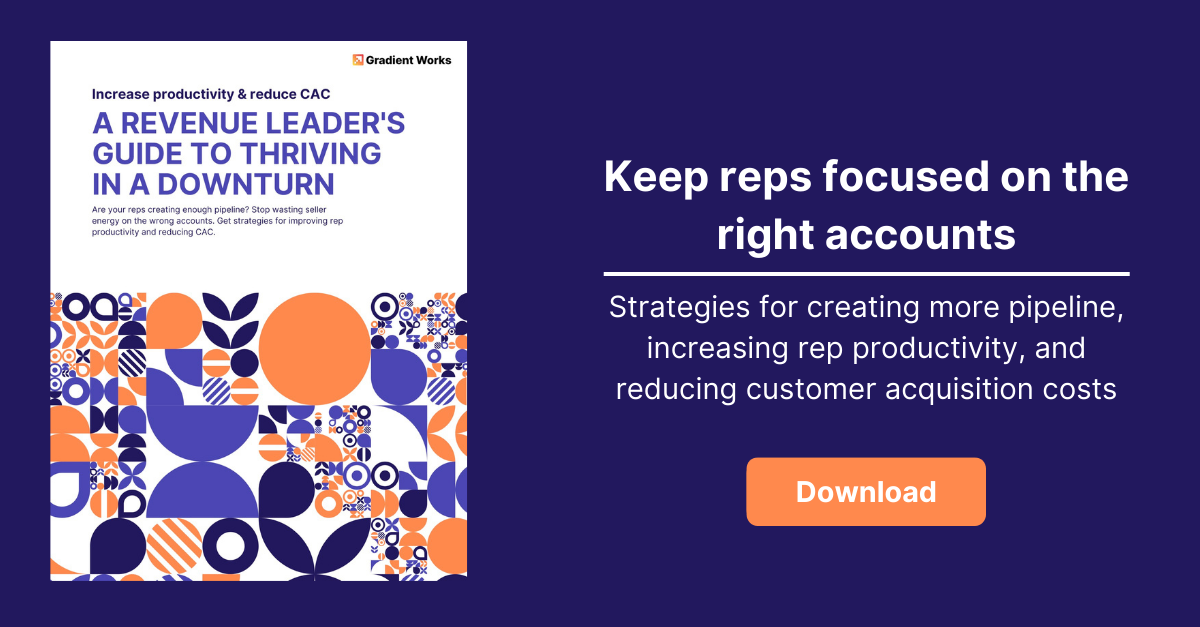Lead distribution processes often fail due to two factors: legacy processes and territory imbalances. In this blog, we'll provide an overview of how companies can implement a dynamic lead distribution process to mitigate these issues.
Legacy processes, or "the way we've always done it," can prevent necessary changes to the lead distribution process. Even with changes in market conditions, go-to-market strategies, and internal leadership, many companies opt to maintain the status quo, preferring predictability over optimization. However, given the current economic downturn, optimizing lead distribution is more important than ever to keep pace.
Territories are another significant factor contributing to lead distribution challenges. Distributing leads by geography or vertical often creates an imbalance of leads. For instance, sales reps selling to tech companies on the West Coast have more leads than their counterparts on the East Coast. Instead of relying on geography, companies are increasingly shifting to a dynamic book distribution model.
So, how do you implement a dynamic lead distribution process? Here are the basics:
-
Start with account prioritization
-
Identify leads that fit your ideal customer profile (ICP) using an account scoring model. This model helps keep reps focused on the right accounts, regardless of the territory model. More on the basics of account scoring here.
-
Prioritize accounts further using intent signals
-
Intent signals are actions that indicate a lead or employee at a company is interested in your product. For inbound leads, these signals could be form fills, demo requests, or video views. Outbound prospecting signals are more challenging to identify, so many companies use intent data providers like 6sense or Demandscience (a Gradient Works customer). However, there are plenty of intent signals in your existing tech stack you can use.
Inbound leads
Inbound leads come in three flavors: new contact/new account, new contact/existing account, and fake information. New contact/new account inbound leads are often distributed via round robin. Most round robin processes are not as simple as finding the “next one up” and require adjudicating conflicts, adjusting the rotation, and re-routing new contacts from an existing company in your CRM. To dynamically distribute new leads and reduce the number of conflicts and re-assignments, take into account these factors in your round robin.
-
Rep capacity: Calculate your reps' capacity using this handy calculator to prevent quality leads from falling through the cracks.
-
Lead-to-account matching: Be sure inbound leads are first matched to accounts in your CRM. Usually, this looks at something like an email address web domain, searches for matching accounts, and if a match exists, removes them from the new contact/new account round robin and routes them to the Account Executive in charge of that existing account. For more on lead-to-account matching, check out this practical guide.
If your sales team handles both inbound and outbound, you will want to consider capacity planning based on how many inbounds they receive vs. the number of accounts they own for outbound prospecting.
Outbound prospecting
Outbound prospecting benefits from a dynamic book approach. Sales leaders can create target books for individual reps based on several factors, giving them only the best accounts to work. For example, a sales leader could create a target book by combining an account score of 7/10 or higher with a website visit this week. Those accounts could then be distributed instantly to the outbound sales team to start working.
Omnipresent built a similar model using Gradient Works that distributes 50 new high-potential accounts every week to their SDRs. This new dynamic books distribution increased account touches by 66% and new opportunities by 16%. Read more about their process.
Account pools
Unfortunately, not every lead ends up converting into a sale. Legacy processes and territory models often result in accounts being assigned to a particular sales rep permanently, creating a backlog of inactive accounts that cannot be accessed by other sales teams. These leads may have been disqualified for some reason or may have expressed interest in revisiting the deal at a later time (we call those “get back to me” accounts). However, these accounts could be better served if they were pooled together and nurtured until they become in-market again.
To help reps focus on the best accounts, here are two policies that can be implemented into your lead distribution process:
-
Returns: When a lead has been worked on and completed or has been disqualified, the rep can return that account to the pool to receive a new lead in its place. This practice is not uncommon, but in dynamic books it is rep initiated.
-
Returns and Redistributions: At first glance, this may seem like a punishment for sales teams, but a "use it or lose it" policy of cycling accounts benefits reps. In addition to ensuring leads don't go unworked, the distribution of new accounts gives reps new challenges, opportunities, and improves morale.
Starting a dynamic books process doesn’t have to be a complete overhaul of your existing system. You can begin by implementing these lead distribution concepts one team or one process at a time. By building a foundation of dynamic lead distribution, you can create more flexibility in your sales process, eliminate the need for extensive territory planning, and ultimately increase efficiency and pipeline.





